Throughout history, magnificent treasures from various cultures have been stolen or mysteriously lost.
They may have been taken during wars or disasters or seized by military forces as spoils of war. Sometimes treasures are recovered, but many remain missing.
Below are some of the lost treasures that may never be found. Some of these treasures may have been destroyed, but others could still exist and be recovered one day.
The Amber Room in the Russian Palace
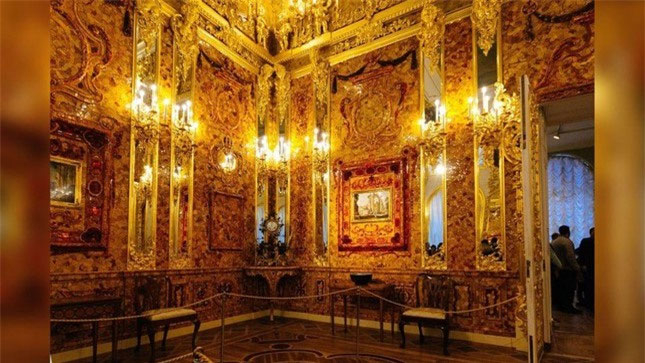 Amber Room.
Amber Room.
The Amber Room was constructed in the 18th century at Catherine Palace in Tsarskoe Selo, near St. Petersburg. The room featured mosaics, mirrors, and gilded carvings, along with panels made from approximately 450 kg of amber. Tsarskoe Selo was occupied by the Germans in 1941 during World War II, and the panels and artworks from the room were dismantled and taken to Germany. They have not been seen since, and they may now be destroyed. Today, Catherine Palace hosts a reconstruction of the Amber Room.
The Ancient Sarcophagus at the Giza Pyramid
The pyramid of Pharaoh Menkaure is the smallest of the three pyramids built at Giza around 4,500 years ago. In the 1830s, British Army officer Howard Vyse explored the Giza pyramids, including a beautifully decorated sarcophagus found in Menkaure’s pyramid. Vyse attempted to transport the sarcophagus to England in 1838 aboard the merchant ship Beatrice, but the ship sank during the journey, taking the intricately decorated sarcophagus with it.
The Ark of the Covenant
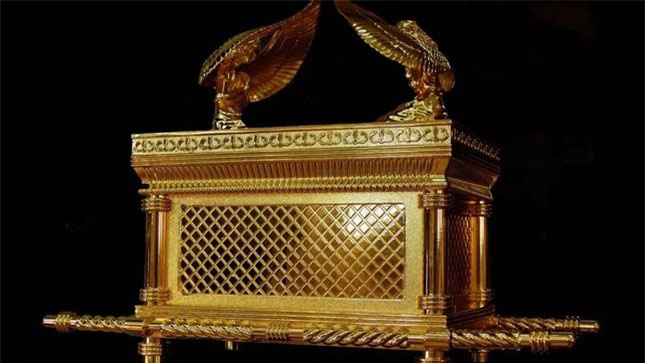 Ark of the Covenant.
Ark of the Covenant.
According to the Hebrew Bible, the Ark of the Covenant is a chest that contains the tablets inscribed with the Ten Commandments. The Ark was kept in a temple in ancient Jerusalem, Israel, which is believed to have been built by King Solomon. This temple was destroyed in 587 BC when an army from ancient Babylon, led by King Nebuchadnezzar II, conquered Jerusalem and looted the city. What happened to the Ark of the Covenant is unclear, and its location has long been a source of speculation.
The Greatest Sword of Japan
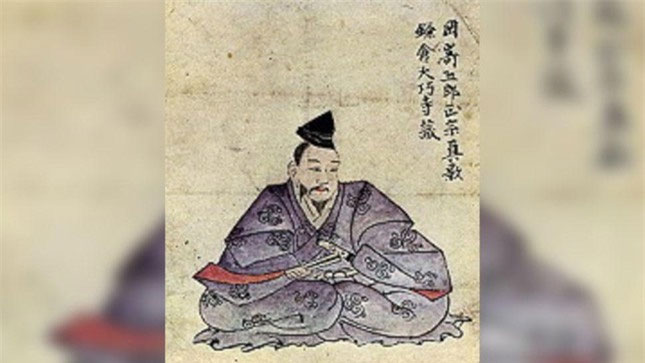 Portrait of the maker of the greatest sword in Japan.
Portrait of the maker of the greatest sword in Japan.
Honjo Masamune is a sword believed to have been crafted by Gorō Nyūdō Masamune, who lived from 1264 to 1343, and is regarded by many as the greatest swordsmith in Japanese history. The sword is named after one of its owners, Honjo Shigenaga, and later came into the possession of Tokugawa Ieyasu, who became Japan’s first shogun after winning a series of battles in the 16th century.
The sword was passed down through the Tokugawa family until the end of World War II. It was handed over to the American authorities during the U.S. occupation of Japan. However, the sword never reappeared. It is possible that American soldiers destroyed the sword, along with other weapons captured in Japan, or that they may have taken the sword to the U.S.
The Lost Library of the Russian Tsars
The library of the Russian Tsars was said to contain an enormous collection of ancient Greek texts, as well as texts written in various languages. The rulers of Russia are believed to have established the library in 1518, and in the 16th century, Prince Andrey Kurbsky wrote about a meeting between the philosopher Maximus (1475–1556) and Grand Prince of Moscow Vasili III (1479-1533), where the Grand Prince showed Maximus a large number of Greek books.
There are claims that Ivan IV, also known as Ivan the Terrible, who lived from 1530 to 1584, somehow concealed the texts of the library. Many efforts have been made over the centuries to uncover this “hidden library,” but no traces have been found to date.
The Lost Poems of the Poet Sappho
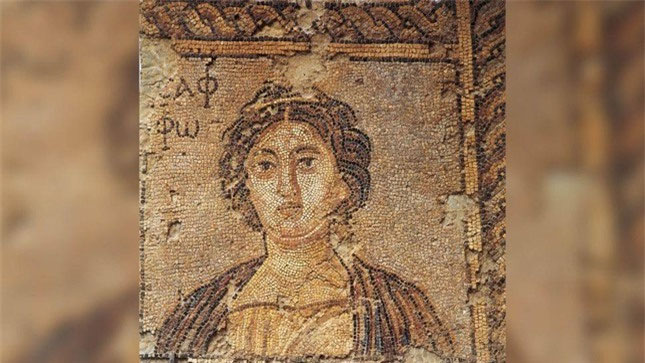 Mosaic portrait of the poet Sappho.
Mosaic portrait of the poet Sappho.
The Greek lyric poet Sappho, who lived in the 7th century BC, was highly regarded by the ancient Greeks and is considered one of the greatest poets. Unfortunately, very few of her poems survive, including one about her brother and another about unrequited love.
The Treasure of Bishop Castillon
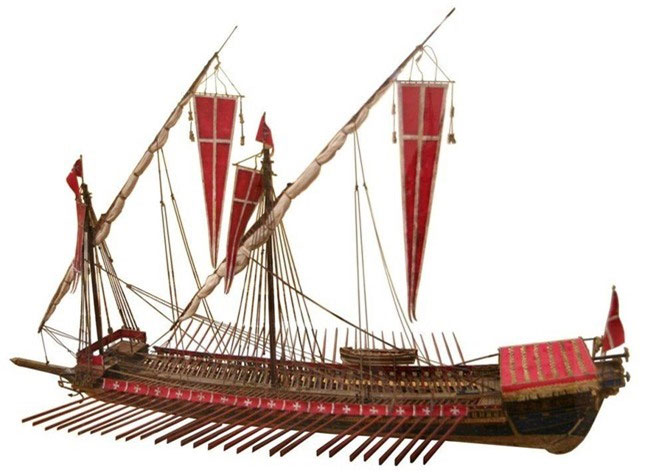
Simulation of the ship carrying gold that sank.
In 1357, the ship São Vicente set sail from Lisbon, Portugal, to Avignon, France, carrying the treasures of Thibaud de Castillon, the bishop of Lisbon, who had recently passed away. This treasure included gold, silver, rings, decorative carpets, jewelry, fine plates, and even a portable altar. While sailing near the town of Cartagena, now in Spain, the São Vicente was attacked by two pirate ships that seized the treasure.
The Mosaic of Jesus
The mosaic is a hypothetical text from the 1st century AD containing several sayings attributed to Jesus. If it existed, scholars believe it was used to create the Gospel of Matthew and Luke.
Nazi Gold
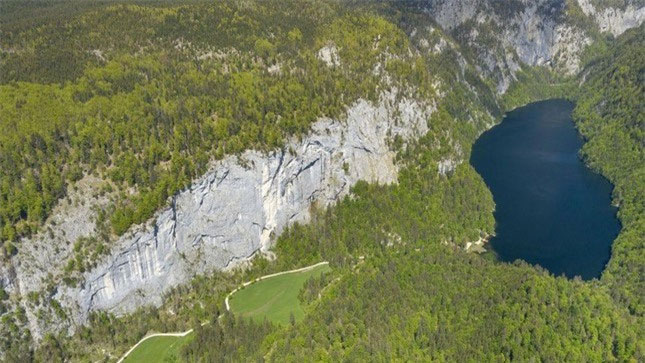
Toplitz Lake in Austria.
According to legend, towards the end of World War II, Nazi SS officer Ernst Kaltenbrunner ordered a large amount of gold to be sunk in Toplitz Lake in Austria to prevent it from being seized by Allied forces. Since then, numerous searches have been conducted, but no traces of the gold have been found to date. Some divers have lost their lives trying to find the gold in the lake.
The Play of William Shakespeare
William Shakespeare is known to have written the play “Love’s Labour’s Won,” although no copies exist today. It may have been a sequel to “Love’s Labour’s Lost,” a comedy Shakespeare penned in the 1590s. Documents from the 1590s and 1600s indicate that “Love’s Labour’s Won” was published in 1598 and was still being sold in 1603, although no surviving copies have been found.
The Jade Easter Egg
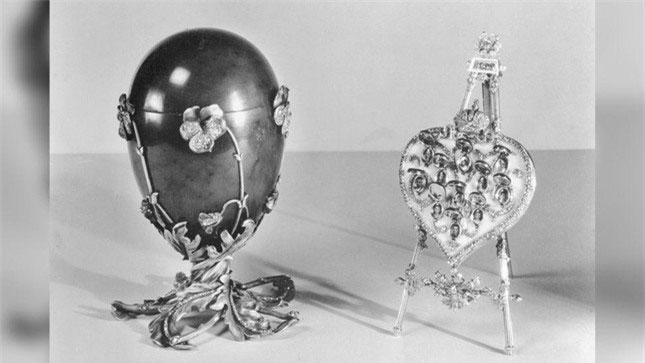
The jade Easter egg mounted on a base of gold leaves and branches.
The Fabergé egg, a jade Easter egg, is adorned with enamel and diamonds and mounted on a base of twisted gold leaves and branches. It was gifted by Tsar Nicholas II to his mother, Empress Marie, during Easter in 1899.
From 1885 to 1916, the Fabergé jewelry company, run by Russian jeweler Peter Carl Fabergé, crafted lavishly decorated Easter eggs for the Russian royal family.
Ten eggs were produced from 1885 to 1893, during the reign of Emperor Alexander III; 40 more eggs were created during the reign of his son, Nicholas II, two each year, one for his mother and one for his wife.
The Russian Revolution of 1917 led to the execution of Nicholas II, the last emperor of Russia, along with much of the Romanov family. After this death, several eggs went missing, and rumors suggest that some are in private collections around the world. It is possible that some of the eggs are currently in the U.S. through shipments of antiques and artifacts valued at an estimated $164 million that were transported from the Soviet Union to the U.S. at the end of the Cold War.
The First FIFA World Cup Trophy
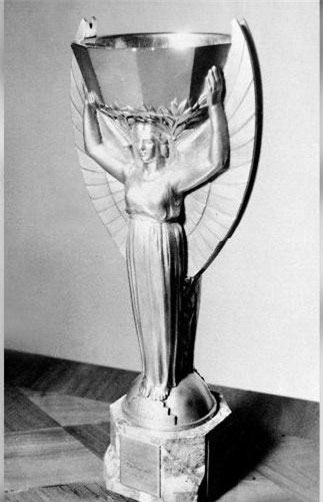 The first solid gold World Cup trophy.
The first solid gold World Cup trophy.
Created by French sculptor Abel Lafleur, the solid gold Jules Rimet Trophy was awarded to the captain of the World Cup-winning team. In 1970, the Jules Rimet Trophy became Brazil’s permanent property after their third victory at the World Cup in Mexico.
The trophy—named after Jules Rimet, the founder of the World Cup—was sculpted by Abel Lafleur and depicts the goddess of victory holding an octagonal vase above her head, made of gold with a semi-precious stone base.
The trophy was first awarded at the inaugural World Cup in 1930 and was transferred every four years to the winning nation, but in 1970, Brazil won for the third time, and according to FIFA regulations, a team winning the World Cup three times in a row would permanently own the Jules Rimet Trophy. The trophy was thus sent to Brazil, and a new World Cup trophy was created.
In 1983, the trophy was stolen in Rio de Janeiro and has not been seen since. The thieves may have melted down the trophy, which is primarily made of gold and weighs approximately 6.1 kg.
The Camera of Explorer George Mallory
British explorers George Mallory and Andrew Irvine went missing on June 8, 1924, while near the summit of Mount Everest. A storm may have prevented them from reaching the peak. It wasn’t until 1953 that a team led by Edmund Hillary became the first to successfully climb to the summit of Everest.
The body of Mallory was discovered in 1999, while Irvine’s remains have never been found. If Irvine’s body were to be discovered, it is likely that the camera Mallory and Irvine carried would also be found. If the film in the camera has been preserved, it could answer the question of whether Mallory and Irvine reached the summit of Everest before their deaths.
The World’s First Feature Film
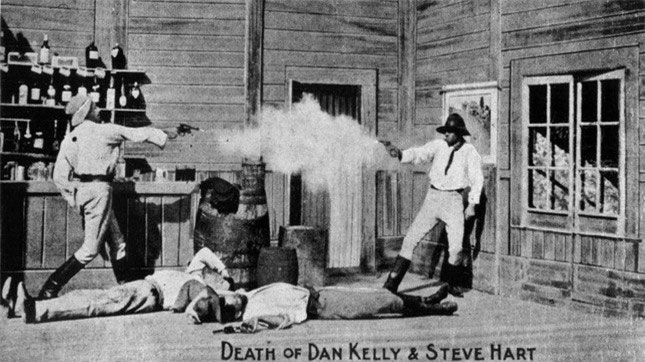
A scene from the world’s first feature film.
“The Story of the Kelly Gang,” released in Australia in 1906, is considered by many to be the first feature film in the world. With a runtime of over one hour, the film depicts the story of the notorious 19th-century outlaw Ned Kelly (1854-1880) and his gang.
Unfortunately, the film was not preserved properly, and by the 1970s, only fragments and a few photographs remained. Restoration efforts have allowed for about a quarter of the film to be restored, but much of it remains damaged.




















































